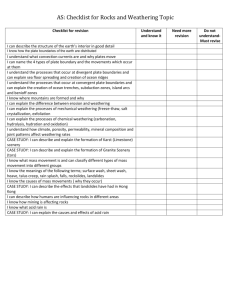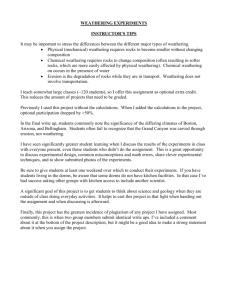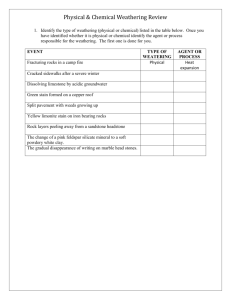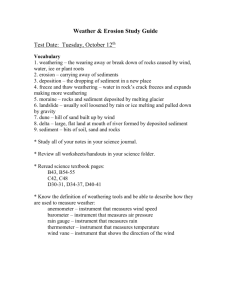wind ice
advertisement
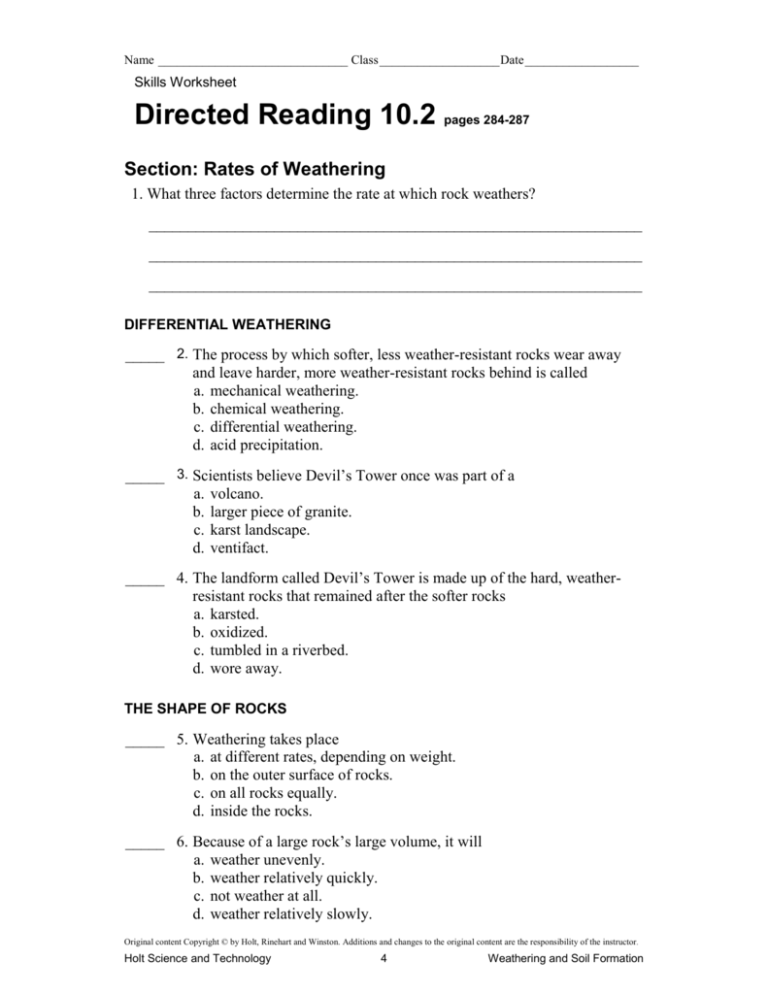
Name ______________________________ Class ___________________ Date __________________ Skills Worksheet Directed Reading 10.2 pages 284-287 Section: Rates of Weathering 1. What three factors determine the rate at which rock weathers? _______________________________________________________________ _______________________________________________________________ _______________________________________________________________ DIFFERENTIAL WEATHERING _____ 2. The process by which softer, less weather-resistant rocks wear away and leave harder, more weather-resistant rocks behind is called a. mechanical weathering. b. chemical weathering. c. differential weathering. d. acid precipitation. _____ 3. Scientists believe Devil’s Tower once was part of a a. volcano. b. larger piece of granite. c. karst landscape. d. ventifact. _____ 4. The landform called Devil’s Tower is made up of the hard, weatherresistant rocks that remained after the softer rocks a. karsted. b. oxidized. c. tumbled in a riverbed. d. wore away. THE SHAPE OF ROCKS _____ 5. Weathering takes place a. at different rates, depending on weight. b. on the outer surface of rocks. c. on all rocks equally. d. inside the rocks. _____ 6. Because of a large rock’s large volume, it will a. weather unevenly. b. weather relatively quickly. c. not weather at all. d. weather relatively slowly. Original content Copyright © by Holt, Rinehart and Winston. Additions and changes to the original content are the responsibility of the instructor. Holt Science and Technology 4 Weathering and Soil Formation Name ______________________________ Class ___________________ Date __________________ Directed Reading A continued 7. Small rocks weather more quickly than large rocks because they have more surface area as compared to their ___________________________. WEATHERING AND CLIMATE 8. The average weather condition in an area over a long period of time is called______________________. 9. Chemical weathering such as oxidation occurs more quickly in a climate that is ______________________ and ______________________. WEATHERING AND ELEVATION _____ 10. Weathering occurs faster at high elevations because of a. an increase in wind but not ice or rain. b. an increase in ice and rain but not wind. c. a decrease in wind, ice, and rain. d. an increase in wind, ice, and rain. 11. How does gravity contribute to the weathering of steep mountain slopes? ____________________________________________________________________ ____________________________________________________________________ Original content Copyright © by Holt, Rinehart and Winston. Additions and changes to the original content are the responsibility of the instructor. Holt Science and Technology 5 Weathering and Soil Formation
